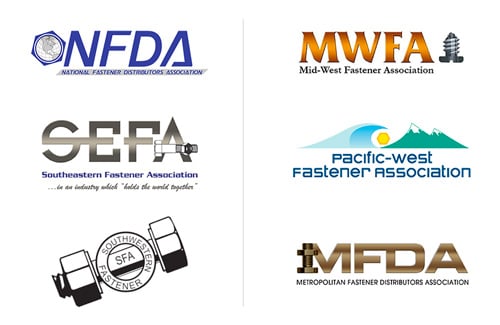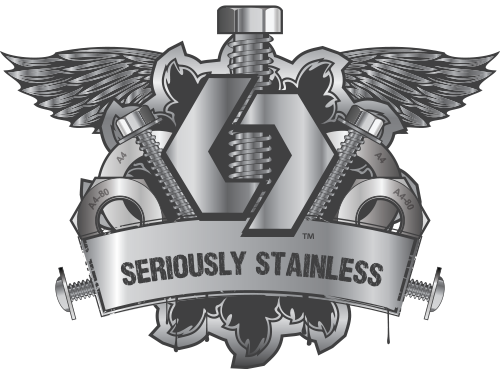
The use of standardization systems isn’t new.
For centuries the world has been using the taxonomic structures created by Carl Linnaeus in the 1700s. Considered the father of modern taxonomy, Linnaeus developed the binomial nomenclature convention for naming plants with a genus and species name. This allows scientists from across the globe to communicate more effectively with a universally accepted system.
The DIN, ISO, and EN standardizations accomplish the same goal in a broad spectrum of industries. For the fastener world, it’s a vital set of data used in finding the right parts for your project.
Deutsches Institut für Normung (DIN)
The DIN began in Berlin in 1917. Its initial purpose was quality assurance with the aim to improve global communication. Its first standard, the DIN 1, set specifications for taper pins, a type of steel rod used in mechanical engineering. Having these requirements improves manufacturing efficiency and bolsters trade. While using these standards is voluntary, it offers opportunities for increasing exports and efficiency.
The organization is an independent non-profit with over 26,000 contributing experts. It acted quickly after its start, publishing its 3000th standard in 1927. In 1951, the DIN joined the ISO, working on the country’s behalf. In 1961, it organized the European Committee for Standardization (CEN). The DIN increased its scope in the 1970s to include the burgeoning technology industry.
The global reach of DIN came into fruition with its participation in the Transatlantic Free Trade Agreement (TAFTA) in 2013. It strengthened its relationship with China’s Standardization Administration of the People's Republic of China (SAC) with its Beijing office in 2014. Today, it works in tandem with the ISO and the EU to support European business in the global economy.
To date, DIN has published over 80,000 standards that cover requirements in a variety of industries, from acoustics to safety guidelines to the drying stages of paints and varnishes. The organization operates as an adjunct to the ISO and EN if standards do not exist with the two systems. While its primary interest is in Germany, 85 percent of its standards are European or international.
European Standards (EN)
The CEN is the European equivalent of the DIN, covering the participating nations of the EU. Like the DIN, the main focus of EN standardization is the countries it represents in the global marketplace. Its mission mirrors it, with requirements to ensure environmental protection, worker safety, healthcare, and R&D across a full spectrum of industries, services, and products.
ENs supersede any existing standards of the member nations, with immediate adoption by the countries. It has 20 fields of study and over 440 technical committees, supported by over 60,000 experts in their respective industries. Interestingly, other non-European countries have joined the CEN, including Serbia and Turkey. The organization also has several affiliates in Israel, Egypt, and Ukraine.
The drive toward standards has played out on an international scale. To avoid conflict, the CEN and ISO drafted the Vienna Agreement in 1991, giving the latter primary authority. CEN works with the European Committee for Electrotechnical Standardization (CENELEC) to develop its voluntary standards. The organizations pride themselves on their transparent drafting and maintaining process.
On the global front, its mission is to promote European industries in the global economy while lending support to international cooperation goals. The CEN and CENELEC recently launched the Strategy 2030 program. Its mission is to increase awareness and optimize the global digital transition. It includes a plan for creating a resource-efficient economy for creating a more sustainable EU.
International Organization for Standardization (ISO)
The ISO got its start in 1926 as the International Federation of the National Standardizing Associations (ISA). The organization ended its brief reign in 1942 and later emerged as the ISO in 1946 with 25 founding countries. Like the DIN and EN, its standards are voluntary. Its role is to oversee the existing national standards to unify these requirements for simplified global trade.
Its mission reflects that of other organizations to foster the reliability, quality, and safety of products, processes, and services. The ISO published its first standard, then referred to as recommendations, in 1951. In 1960, it released the ISO 31 for SI— International System of Units. This milestone established set requirements for measurement still in use today.
The removal of trade barriers took a giant leap forward with the publication of freight container standards in 1968, building on its earlier success. In 1971, its focus turned to the environment with water and air quality technical committees. The ISO then pivoted to quality management in 1987 with the ISO 9000 standards. Consumers and businesses both benefited from its implementation.
The ISO paved the way for organizations to assess and control their environmental impact with ISO 14001. It provides guidance for developing environmental management systems. It was followed by the ISO 50001 energy management standard in 2011. The organization has successfully adapted to new technologies in today’s digital world.
Its main focus has remained on keeping workers safe, with the publication of ISO 45001 in 2018, detailing occupational health and safety management systems. Today, there are 165 member countries, with over 250 technical committees. It is the largest organization of its type in the world.
The ISO itself is a model for cooperation and transparency. In 2019, it published a record 1,638 new standards, covering industries such as information technology, mechanical engineering, and food and agriculture.
Its reach extended into privacy information management, its risk management toolbox for cybersecurity, and medical device regulation for adapting to a changing world. Its crowning achievement was the FDA's adoption of these quality standards for future regulation of these technologies.
The Importance of Standardization in the Fastener Industry
The benefits of international standards cannot be overemphasized. Because of the foresight of the DIN, CEN, and the ISO, free global trade is possible. These organizations have laid the groundwork for simplified communication and a clear path toward advances in technology to benefit the environment and humanity. Suffice to say that they have improved the quality of life on a global scale.
However, perhaps the best outcome of these organizations is the sharing of knowledge and experience to handle any future crisis or global pandemic. Effective communication is the cornerstone of consensus-based solutions. The DIN, CEN, and ISO have provided the tools to meet these goals and overcome any obstacles.


